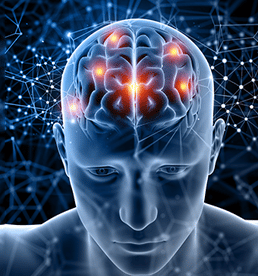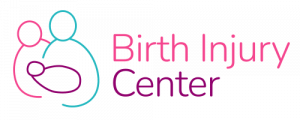Cerebral Palsy Treatment
Cerebral palsy doesn’t just refer to a single condition. In fact, the term cerebral palsy is actually an umbrella term for a category of conditions that impact the way a person moves or balances. Cerebral palsy is the most common motor disability among children and affects approximately 1-4 out of every 1,000 live births around the world, according to the Centers for Disease Control and Prevention.
Home > What Is Cerebral Palsy? > Cerebral Palsy Treatment
- Last Updated Date: April 19, 2024
As of 2022, there is no cure for cerebral palsy, though the condition doesn’t necessarily have a significant impact on all people. Cerebral palsy may be mild, moderate, or severe, but getting an early diagnosis and setting up an intervention plan will result in the best outcome for most children. Outcome results are better with early treatment and diagnosis because medical providers may be able to prevent some of the early threats to a child’s life, health, and growth.
Cerebral palsy may be caused by damage to the developing brain. It’s believed that hypoxia, or a lack of oxygen, during the child’s development or birth could be a factor in the development of cerebral palsy, according to the Centers for Disease Control and Prevention. Damage to the brain during birth could be a result of medical neglect or malpractice, so parents should carefully review the potential causes of their child’s CP.
There is no question that children with cerebral palsy will have unique needs in the future. To ensure proper growth and development, children with cerebral palsy need to have individual treatment plans that take into consideration their personal challenges and symptoms. They may need to have a mix of treatments and therapies.
Therapy for Cerebral Palsy
When a child is diagnosed with cerebral palsy, therapy can help them build their muscles and fine motor skills, as well as teach them unique ways to be independent. Therapists and medical providers will also help children grow mentally and emotionally if they are affected cognitively by cerebral palsy.
Physical therapy is important for almost all children with cerebral palsy. Cerebral palsy can cause a variety of physical conditions, including tight or floppy muscles, restrictions on joint movements, and muscle tremors. Physical therapy helps people with CP to address these issues and develop their motor skills.
Physical therapy primarily focuses on developing gross motor skills. The therapy aims to improve endurance, balance the strength of various muscle groups, and improve range of motion. By working on their gross motor skills, people with CP become better able to perform certain tasks independently, including:
- Walking
- Using a wheelchair
- Moving from a wheelchair to a bath, toilet, vehicle, or other location
Physical therapists can also assist in finding the correct medical devices and equipment to address physical mobility issues.
Occupational therapy focuses on giving people with cerebral palsy independence by modifying the normal daily tasks that they need to complete. For example, someone who is wheelchair-bound may need a tool to help them reach a doorknob and open a door; an occupational therapist can teach them how to use this kind of tool.
The goals of occupational therapy include learning to perform self-care tasks, adjusting to the use of adaptive tools and mobility aids, communicating with others, participating in school or school-related activities, and managing emotional and sensory needs.
Some of the things that children will do during a cerebral palsy occupational therapy session include:
- Flipping the pages of a book to work on fine motor skills
- Using silverware to get used to picking up forks, knives, and spoons
- Painting, drawing, and coloring
- Turning door knobs
- Participating in sensory activities
- Playing with playdough
- Using a keyboard
- Writing
- Using a key in a lock
Unlike physical therapy, the tasks in occupational therapy directly relate to real-world tasks. The activities are meant to be practical and have immediate real-world applications so children may become more independent.
While not all people with cerebral palsy have trouble with oral communication, it is possible that a person with cerebral palsy could have trouble communicating due to issues with the facial, neck, and throat muscles. These muscles are used for important functions like swallowing, chewing, and talking.
Speech and language therapy can help children and adults with cerebral palsy learn to communicate more effectively with others. Speech therapy improves a child’s potential for independence in the future and may positively impact their life overall.
In speech and language therapy, licensed speech therapists work with children to treat speech, language, and communication disorders. They use exercises that train the brain to understand, interpret, and pronounce words, gestures, sounds, and numbers. They also focus on improving the functionality of the mouth, throat, and jaw muscles. Improper function of these muscles can cause issues with speaking, swallowing, and even breathing.
Some of the common conditions that speech therapists deal with include:
- Aphasia: the partial loss of the ability to express oneself verbally
- Prosodic issues: includes problems with speech rhythm and intonation
- Dysphagia: includes trouble swallowing, breathing issues, and choking
- Dysprosody: an interruption in the cadence and timing of speech
- Dyspraxia: when a child can understand language but has trouble with consistent pronunciation due to issues with muscle coordination
- Phonation disorders: causes problems with pitch
- Resonance disorders: vocal tract problems
- Stuttering or fluency disorders (includes repetition or chronic interruption of speech)
- Articulation disorders (includes omitting the required sounds to make words)
Some speech therapists believe that being able to communicate well with others also helps children with cerebral palsy minimize their risk of depression.
Recreational therapy uses fun activities to improve motor function in people with CP. This modality is highly individualized, and focuses on helping those with CP to take part in any activity that they enjoy. In effect, this serves the function of physical, occupational, and speech therapy, while also helping people with CP to improve their outlook, mood, and quality of life by doing things that they find fun.
One example is hippotherapy, in which people with CP engage in horseback riding. Studies have shown that this therapy is effective for treating muscle asymmetry of the hip and trunk. Riding horses also helps to improve gross motor function, and has even been shown to have more benefits in this regard than a typical physical therapy session.
Medications to Treat Cerebral Palsy
There are medications that can treat some of the symptoms of cerebral palsy, allowing those with cerebral palsy to live more comfortably. Some of the most common medications include:

Injections for Spasticity
In some cases, injections may be useful for treating spasticity. One of the options is botulinum toxin (Botox). These injections inhibit muscle contractions, which helps to relieve pain and stiffness and help to improve the patient’s range of motion and motor function.
The results last only a few months, so the injections must be performed regularly. There are also some potential side effects, ranging from mild flu-like symptoms and pain at the injection site to trouble swallowing or breathing. The risks and benefits of these injections must be carefully considered for each patient.

Muscle Relaxants
Oral muscle relaxants are another option for relieving muscle spasticity. Some of the options include:
- Dantrolene sodium
- Tizanidine
- Baclofen
- Diazepam
In some cases, the muscle relaxant baclofen may be injected directly into the area of the spinal cord, rather than taken by mouth. A pump is implanted under the skin of the abdomen, and the medication is delivered to the fluid around the spinal cord through a small tube. By delivering the medication right where it’s needed, this method helps to minimize side effects while still getting the beneficial effects of the medication.

Seizures
Many children who have cerebral palsy suffer from debilitating seizure activity. To reduce the chances of serious seizures, medical providers may suggest medications such as Lamictal and Trileptal. The kind of medication a doctor prescribes will depend on the types of seizures a child has. For example, grand mal seizures may be treated with phenobarbital or Lamictal, while other drugs may be used for clonic-tonic seizures (or other forms).

Excessive Drooling
For excessive drooling, anticholinergic medications are often prescribed. Robinul is one option. It’s also possible to use Botox injections in the salivary glands to reduce drooling.
Surgery to Treat Cerebral Palsy
Surgery may be an option for some people with cerebral palsy. There are two main kinds of surgery: orthopedic surgery and nerve surgery.
Orthopedic Surgery
Orthopedic surgery can treat spasticity and tight muscles in children with cerebral palsy. To help children with CP, the surgeon creates an incision over the affected muscle. Then, parts of the muscle are cut away to release tension.
Nerve Surgery
A surgery called a selective dorsal rhizotomy addresses muscle spasticity by cutting the nerve rootlets in the spinal cord that send abnormal signals to the muscles throughout the body.
Assistive Devices for Cerebral Palsy Treatment
Many people have tried various alternative therapies for CP, and some have found that these are helpful. To date, clinical trials have not demonstrated that any of these methods are effective, and there are no alternative therapies for cerebral palsy approved by the U.S. Food and Drug Administration. Still, research is ongoing to find new ways to treat CP.
Many doctors and researchers believe that stem cell therapy holds promise for helping people with cerebral palsy. It’s hoped that stem cells can be used to fix damaged tissue in the brain and other parts of the nervous system, which would benefit people with cerebral palsy and similar disorders. However, this method is still in its early stages, and effective stem cell treatments are not yet available. There are many research studies currently looking at stem cell therapy for CP, so there is the potential that this type of therapy could be integral to helping those with cerebral palsy in the future

Orthotics
Orthotic devices include medical devices such as leg braces, splints, wedges, special chairs, and other devices that make it more comfortable to perform daily tasks. Many of the orthotic devices that people with cerebral palsy use are wearable devices that optimize functional independence.

Computers and Computer Software
Computers and computer software provide individuals with the option to communicate when they may not be able to do so verbally. Assistive computer software and computers may help with educational performance, the ability to express oneself, and the ability to be more independent.

Voice Synthesizers
Since some people with cerebral palsy may struggle to speak normally, speech-generating devices help them communicate more extensively. These devices, known as voice output communication aids, or VOCAs, expand on the child or adult’s current ability to communicate.

Wheelchairs, Scooters, Walkers, and Crutches for Mobility
Mobility issues are common among those with cerebral palsy, which is why many use wheelchairs, scooters, crutches, and walkers for support. Assistive devices can improve the quality of life and make a child more self-sufficient.
If a child struggles to walk, for example, a wheelchair gives them an opportunity to manually (or with a motor) move from place to place without a caregiver or parent. In the longer term, learning to use a mobility device may help with occupational gains.
Alternative Therapies for Cerebral Palsy Treatment
Many people have tried various alternative therapies for CP, and some have found that these are helpful. To date, clinical trials have not demonstrated that any of these methods are effective, and there are no alternative therapies for cerebral palsy approved by the U.S. Food and Drug Administration. Still, research is ongoing to find new ways to treat CP.
Many doctors and researchers believe that stem cell therapy holds promise for helping people with cerebral palsy. It’s hoped that stem cells can be used to fix damaged tissue in the brain and other parts of the nervous system, which would benefit people with cerebral palsy and similar disorders. However, this method is still in its early stages, and effective stem cell treatments are not yet available. There are many research studies currently looking at stem cell therapy for CP, so there is the potential that this type of therapy could be integral to helping those with cerebral palsy in the future.
Written by:
Birth Injury Center Team
The Birth Injury Center aims to create informational web content and guides to help women and their families seeking support and guidance for birth injuries caused by medical negligence. All of the content published across The Birth Injury Center website has been thoroughly investigated and approved by medical expert Natalie Speer, RNC-OB, Attorney Ryan Mahoney.


